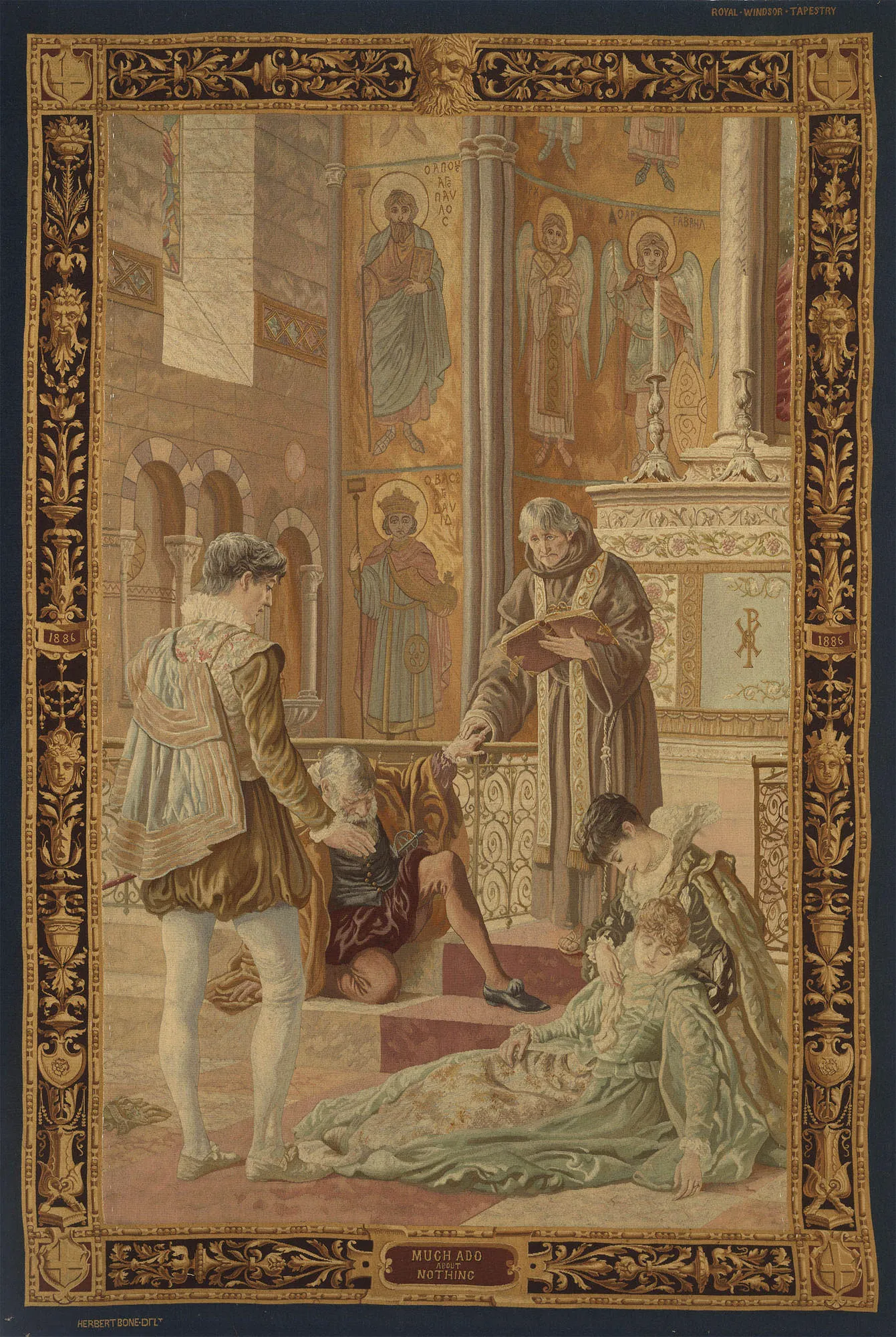The exhibition asks: “What has Shakespeare done for the royal family, and what has the royal family done for Shakespeare?”, revealing the full extent of the relationship between the royal family and Shakespeare and its impact on the shaping of British culture over time. Shakespeare addresses royal history in his plays; his works have taught members of the royal family how to perform for a public audience, have helped shape royal ideology and have served as a crucial influence in the education of young members of the royal family. The exhibition’s contemporary resonances are palpable, for instance, in the history of the successive Princes of Wales identifying with Prince Hal in Shakespeare’s Henry IV plays, as he waits to be become the successful military leader, Henry V. And the extraordinary 3D digital visualisations we have created give us a fascinating insight into the way Shakespeare has been staged at Windsor across time in very different contexts from the professional theatre. With the undiminished global fascination with the British royal family, this visually striking exhibition will appeal to a very wide audience, demonstrating by way of a varied and fascinating series of objects the centuries-long intertwining of royalty and Shakespeare.
Principal Investigator, Professor Gordon McMullan of the London Shakespeare Centre at King’s
15 July 2021
New exhibition reveals the entwined stories of the royal family and Shakespeare across the centuries
A new digital exhibition explores the relationship between Shakespeare’s works and the royal family through history

A new digital exhibition explores the relationship between Shakespeare’s works and the royal family through history, and reveals how influential this relationship has been on the shaping of British culture.
The exhibition ‘Making History: Shakespeare and the Royal Family’ puts viewers in the audience of performances watched by Queen Victoria and Her Majesty The Queen when Princess Elizabeth, using digital visualisations of 3D spaces to bring historical Shakespearean performances in the State Apartments at Windsor Castle vividly to life for the first time.
The exhibition draws on new archival research led by Shakespeare in the Royal Collection (ShaRc, part of the Department of English), which was created thanks to AHRC funding awarded to King’s College London and Birkbeck University of London in 2018-21.
The exhibition (in eight sections) explores the curious, political and occasionally tragic connections between Shakespeare and the royal family through access to key objects in the Royal Collection and Royal Archives, made possible by gracious permission of Her Majesty The Queen. A Shakespeare Folio contains handwritten annotations made by Charles I shortly before his 1649 execution. A painting by society portraitist Thomas Gainsborough (1727–88) marks the affair of the actress and poet Mary ‘Perdita’ Robinson with George IV when Prince of Wales, leading him to assume the role of a dashing Prince Florizel.
Paintings, books, drawings, prints, letters, essays, decorative objects, furniture and photographs from the Royal Collection and Royal Archives – all with fascinating Shakespearean connections – can be explored for free from 15 July at https://sharc.kcl.ac.uk/exhibition.
Principal Investigator, Professor Gordon McMullan of the London Shakespeare Centre at King’s College London, said the exhibition will give a truly fascinating insight into the relationship between Shakespeare’s works and the royal family since the seventeenth century.
Emma Stuart, Senior Curator of Books and Manuscripts, Royal Collection Trust, said, “The ‘Shakespeare in the Royal Collection’ project and the associated digital exhibition present an exciting opportunity to show how generations of monarchs since Elizabeth I have engaged with the work of Britain’s greatest playwright. Whether acquiring copies of Shakespeare’s work, producing art inspired by his plays or enjoying performances at theatres and at court, the royal family has over the past four centuries demonstrated a lasting interest in Shakespeare’s work that continues to this day. We are committed to making the treasures of the Royal Collection and Royal Archives as widely accessible as possible through digital technology, and are delighted that our partners at King’s College London have made this resource available for people around the world to explore online.”
All the spaces featured in the 3D visualisations can be seen during a visit to Windsor Castle.
A wider online database, allowing users to pursue their own curiosity by browsing over 1,000 Shakespeare-related objects from the Royal Collection and Royal Archives, can be explored here: https://sharc.kcl.ac.uk/exhibition
‘Shakespeare in the Royal Collection’ is a three-year AHRC-funded research project at the London Shakespeare Centre at King’s College London. The project is undertaken in collaboration with Royal Collection Trust, investigating the Shakespeare-related holdings in the Royal Collection and Royal Archives, 1714–1945, and providing new information about a broad range of objects created, collected and displayed by generations of members of the royal family.
The London Shakespeare Centre at King’s College London aims to inspire wide engagement with Shakespeare across a range of non-traditional audiences in theatres, schools and higher education, providing resources and leadership in the field of widening participation and breaking down barriers to access.
To visit the exhibition online, click here: https://sharc.kcl.ac.uk/exhibition
Professor Kate Retford of Birkbeck is also part of the research team, along with Dr Kirsten Tambling, a Post Doctoral Research Associate at King's.


